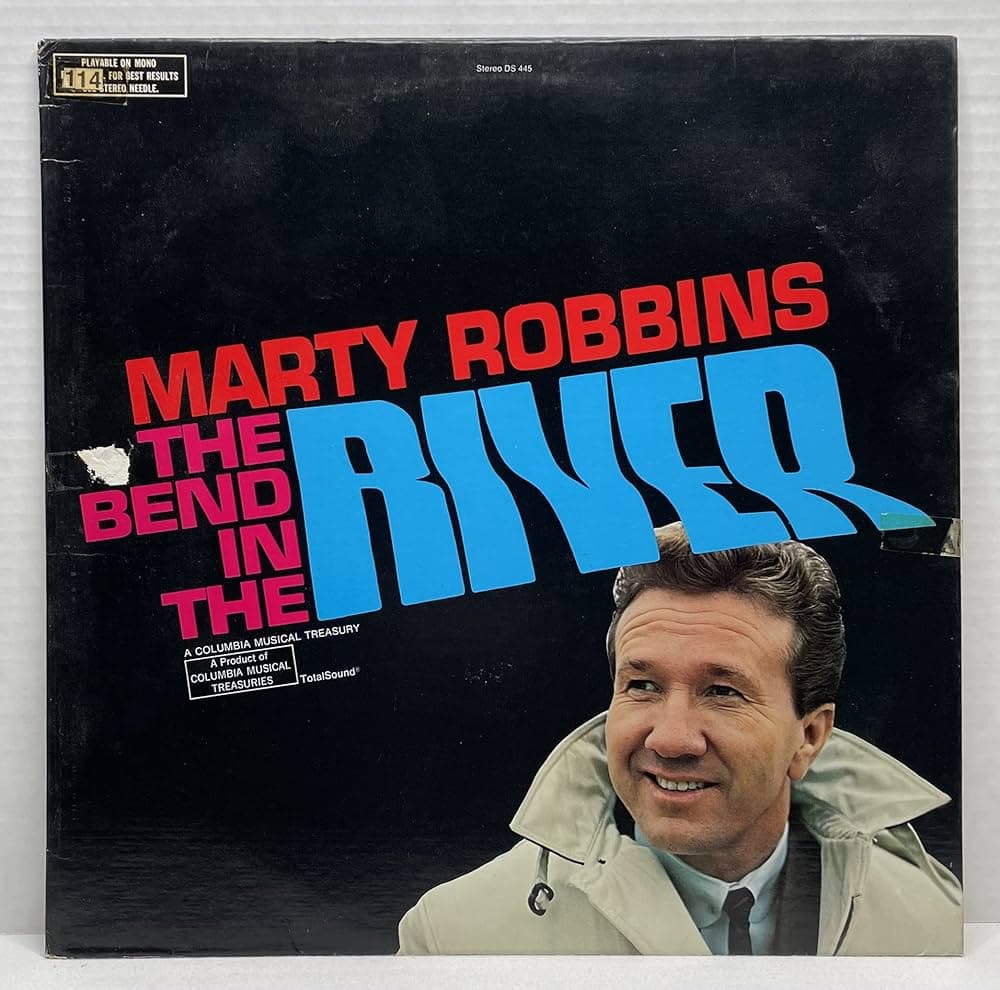
Where the Trail Ends and the River Waits: A Reflection on Fading Sunlight and Final Journeys
There are certain songs, aren’t there, that feel like a comfortable, worn-in saddle—they fit just right, carrying you back to a time when life’s rhythms were a little slower, and stories were told with a steady, reassuring voice. Marty Robbins gave us so many of those treasures, and among the quietest and most reflective is the profoundly moving “The Bend in the River.”
This masterful narrative was first introduced on Robbins’ 1962 album, Portrait of Marty, which was released by Columbia Records. While the album itself did not make a huge splash on the major charts, peaking at a modest position of 35 on the Billboard Top LPs chart (a different era, of course, where an artist’s longevity was more the measure than a single week’s rush), the song was a deep cut that spoke straight to the soul of his dedicated audience. Unlike the chart-busting drama of his signature story-song, “El Paso,” this track never charted as a single—it didn’t have to. It was a song meant for late nights and quiet contemplation, a hidden jewel on an album that showcased the breadth of Robbins’ artistry beyond the celebrated gunfighter ballads.
The story of “The Bend in the River” is simplicity itself, yet its emotional weight is tremendous. It’s a first-person reflection, likely from an aging cowboy or frontiersman, who knows his trail is about to end. The singer describes riding out across the plains, his horse weary, the sun sinking low, and his gaze fixed on a familiar landmark: the spot where the river takes a final, dramatic turn—“The Bend in the River.” This spot is the culmination of his journey, the place he’s come home to, not just for rest, but for eternity. He speaks with an unsettling calm, an old soul’s acceptance of the final curtain. He’s tired, not afraid. He’s not fleeing a posse or riding to meet his jealous doom; he’s simply coming home to lie down.
The meaning, then, is a poignant meditation on mortality and the beauty of a quiet departure. Robbins—who composed the song himself—uses the elemental imagery of the American West, an open, sprawling landscape we all know so well from his work, to tackle the universal experience of death. The “river” is the current of life, and the “bend” is that place beyond which we cannot see—the great unknown, the final, inevitable rest. The singer is ready to stop walking and watching the world and to become a part of the landscape he loves, to be buried “down where the sagebrush grows.” It evokes a particular kind of peace: one that comes only after a lifetime of hard travel and honest living, finding contentment not in defiance of death, but in its natural, fitting conclusion.
Hearing Marty Robbins’ smooth, resonant voice deliver these lines—almost a spoken word narrative over the gentle, rolling instrumentation—it’s impossible not to be drawn into the scene. It’s the sound of a generation’s quiet courage, a dignity in facing what must come. The song doesn’t use grand metaphors or frantic emotion; it’s just a plain, honest look at the horizon. It reminds us of all the trails we’ve walked, the bends we’ve turned in our own lives, and the quiet knowledge that one day, we too will see that last bend where the river flows out of sight. It’s a nostalgic trip back, not to youthful exuberance, but to the steadfast heart of the old West, where a man’s final journey was simply part of the landscape, dignified and true. It is a comforting thought, a beautiful elegy, wrapped in a simple, unadorned country melody. It’s the kind of song that makes you want to pour a cup of coffee and watch the sun go down.